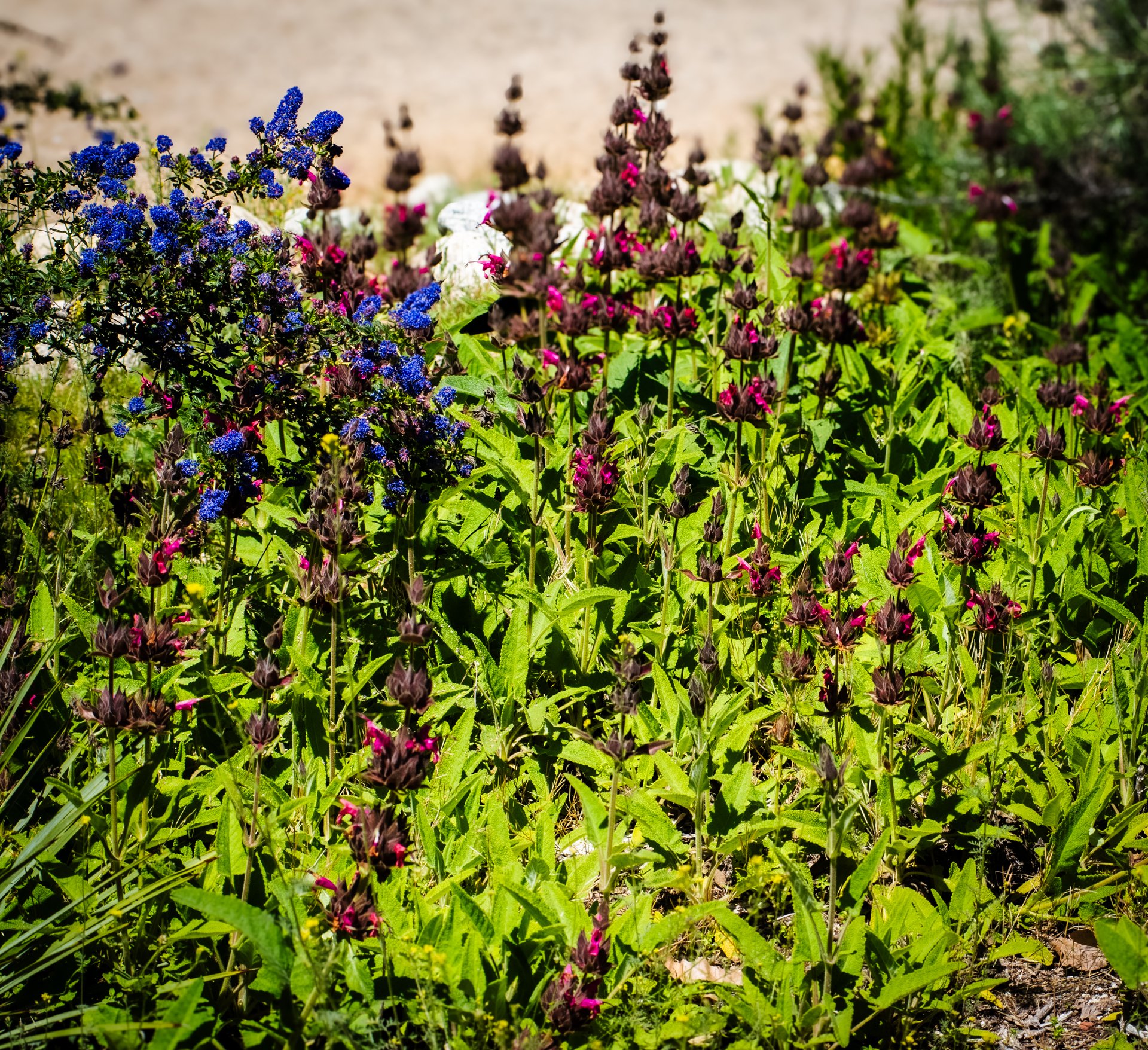
Hummingbird Sage
Salvia spathacea
Hummingbird Sage is one of those plants that everyone has to have and I 100% agree. It adds a lot to any space in terms of visual appeal, smell and wildlife. The bright green leaves work well to brighten up a dark space, the flowers are beautiful and I have yet to meet a person that doesn’t want hummingbirds in their yard. If you grow Hummingbird Sage in an area that gets shade during the Fall, Winter and Spring, like against the north side of a house, expect it to brown and potentially go to deciduous in the summer. It will recover fine for the next year. Hummingbird Sage can take a fair amount of sun (indeed the popular cultivar ‘Powerline Pink’ was found in a clearing underneath power lines) so don’t necessarily restrain yourself to just a shady spot. One thing that does not seem to be well documented is maintenance.
I remove spent stalks and prune back old, tall, senescent growth in the mid-fall so that the sunlight has a chance to reach the ground and remaining stalks. Hummingbird Sage spreads via rhizomes, so opening up an area that’s shaded out by old growth stimulates fresh new growth to come in, otherwise you might end up with a thicket of old stems and not too many leaves. As flowers fade I cut them back to the ground. Most people want Hummingbird Sage to be a dense, low growing groundcover (as you see in the above photo). That cultivar is Salvia spathacea ‘Las Pilatas’ and is incredibly hard to come by in Southern California. Planting the straight species or ‘Power Line Pink’ will result in a rangier, taller groundcover, 2-3 feet in height. Prune out overly tall growth for a uniform appearance if desired.
I heard on a Webinar that ‘Power Line Pink’ displays some tendencies of giganticism, so if you desire a low growing groundcover, favor the straight species.
